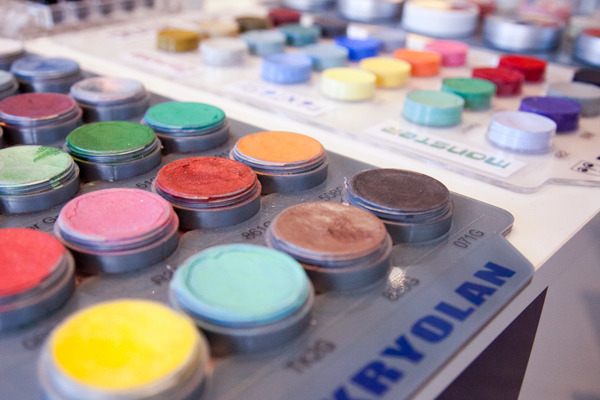Review a cosmetic product
Compare three kid-safe lip balms using smell, texture, ingredients, packaging, and a supervised patch test, then write a short, honest review.



Step-by-step guide to review three kid-safe lip balms
How To Apply Step-by-step makeup for Beginners!
Step 1
Wash your hands with soap and water and dry them so everything stays clean.
Step 2
Put the three lip balms on the table in a row so you can keep them in order.
Step 3
In your notebook write three lines and label them A B and C to match each balm.
Step 4
Smell each balm one at a time and write one short word for each smell next to A B and C.
Step 5
With adult supervision place a tiny dab of balm A on one spot of your inner forearm using a clean cotton swab.
Step 6
With adult supervision place a tiny dab of balm B on a different spot of your inner forearm using a new cotton swab.
Step 7
With adult supervision place a tiny dab of balm C on a third spot of your inner forearm using a fresh cotton swab.
Step 8
Start your timer and wait 15 minutes while watching the three spots for any redness or itchiness.
Step 9
Write the patch test results next to A B and C in your notebook as "no reaction" or describe any change.
Step 10
Use a clean cotton swab to rub a tiny bit of each balm on separate spots on the back of your hand and feel whether they are smooth sticky or greasy and write one word for texture for each balm.
Step 11
Read the ingredient list and look at the packaging for each balm and write one short note about any ingredient you recognize and one about how easy the packaging is to open.
Step 12
Write a short honest review of 3 to 4 sentences that says which balm you liked best and why using your smell texture ingredient packaging and patch test notes.
Step 13
Share your finished review and what you learned by posting it on DIY.org
Final steps
You're almost there! Complete all the steps, bring your creation to life, post it, and conquer the challenge!


Help!?
What can we use if we don't have clean cotton swabs, a timer, or three different lip balms?
If you don't have cotton swabs use a sterilized wooden toothpick or fresh tissue for the tiny dab on your inner forearm, use a phone timer for the 15-minute wait, and if you only have two balms label your notebook lines A and B and write 'C not tested' for the third line.
What should we do if a spot becomes red or itchy, or we accidentally mix up which balm is A, B, or C?
If a spot becomes red or itchy immediately wipe the area with soap and water, tell an adult, mark that balm as a 'reaction' in your notebook, and if you mixed up the order redo the patch test using fresh cotton swabs and relabel the three balms clearly on the table.
How can we change the activity for younger kids or make it more challenging for older kids?
For younger children have an adult perform the forearm patch tests and write single-word smell/texture notes in the notebook while the child gives simple thumbs-up/downs, and for older kids add a blind smell test, look up and note unfamiliar ingredients from the packaging, and include a 1–5 rating before writing the 3–4 sentence review.
What are some fun ways to extend or personalize the lip balm review after finishing the basic steps?
Extend the activity by making a scored chart in your notebook for smell, texture, ingredients, packaging, and patch-test results, photographing the opened packaging, and posting a short photo or video review on DIY.org explaining why your favorite balm won.
Watch videos on how to review three kid-safe lip balms
Daily Makeup Tutorial for School (beginner-friendly)
Facts about children's cosmetic safety
☀️ Not all lip balms protect from the sun — look for ones labeled SPF 15+ if you want real sun protection.
🧪 A simple supervised patch test (tiny dab on the inner forearm) and checking for 24–48 hours helps spot allergic reactions early.
🍯 Beeswax and plant waxes have been used in lip care for centuries — some lip balms still use these natural ingredients today.
🧒 Kids’ skin is thinner and can be more sensitive, so simpler “for kids” formulas often reduce the chance of irritation.
👃 There are thousands of fragrance ingredients; fragrance-free products are less likely to irritate sensitive skin.
How do I guide my child to compare three kid-safe lip balms and write a short review?
What materials do I need to compare three kid-safe lip balms?
What ages is this lip balm comparison activity suitable for?
What safety tips should I follow when doing a lip balm patch test and review?


One subscription, many ways to play and learn.
Only $6.99 after trial. No credit card required



